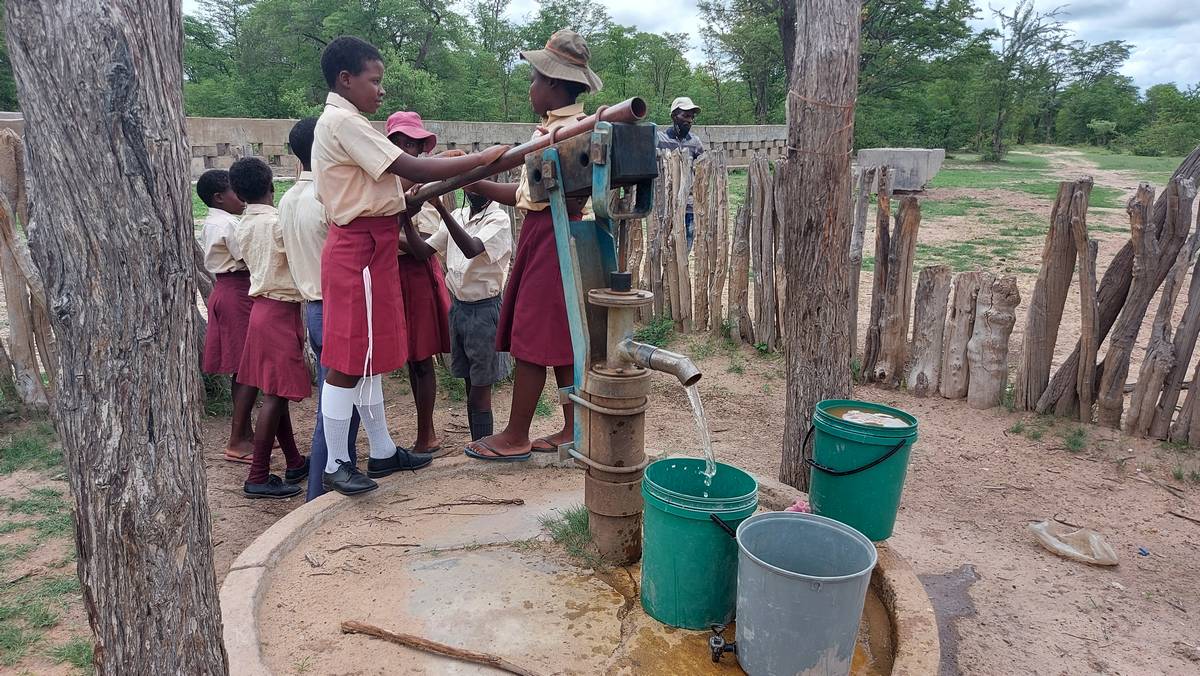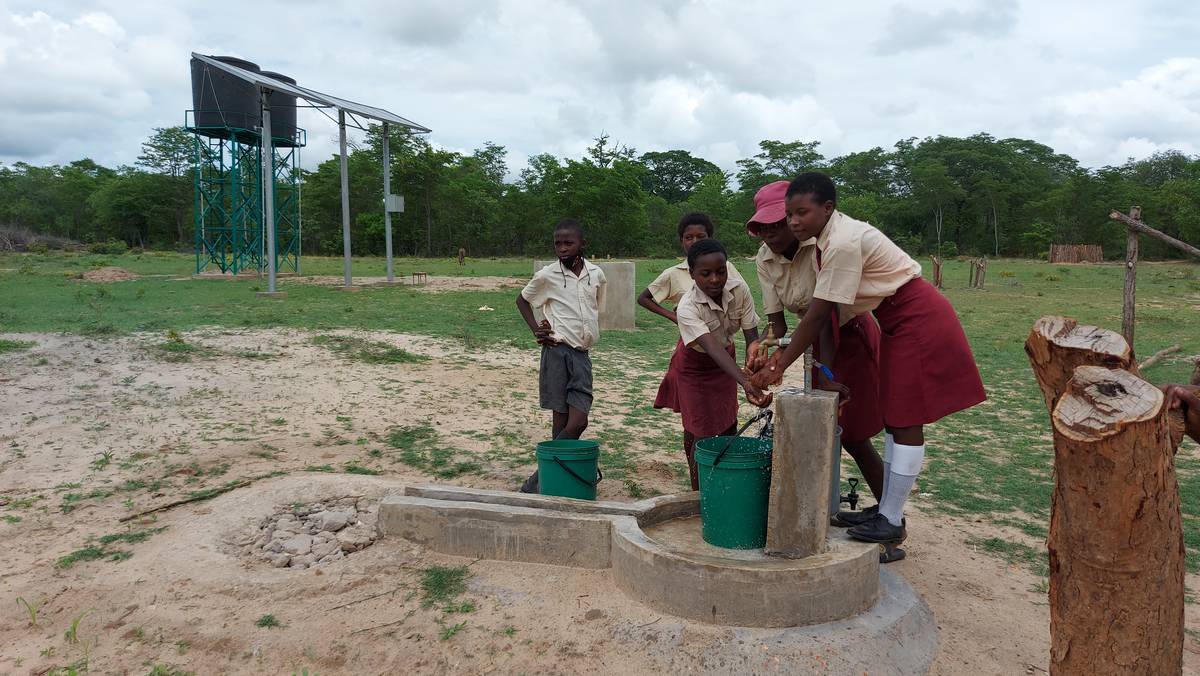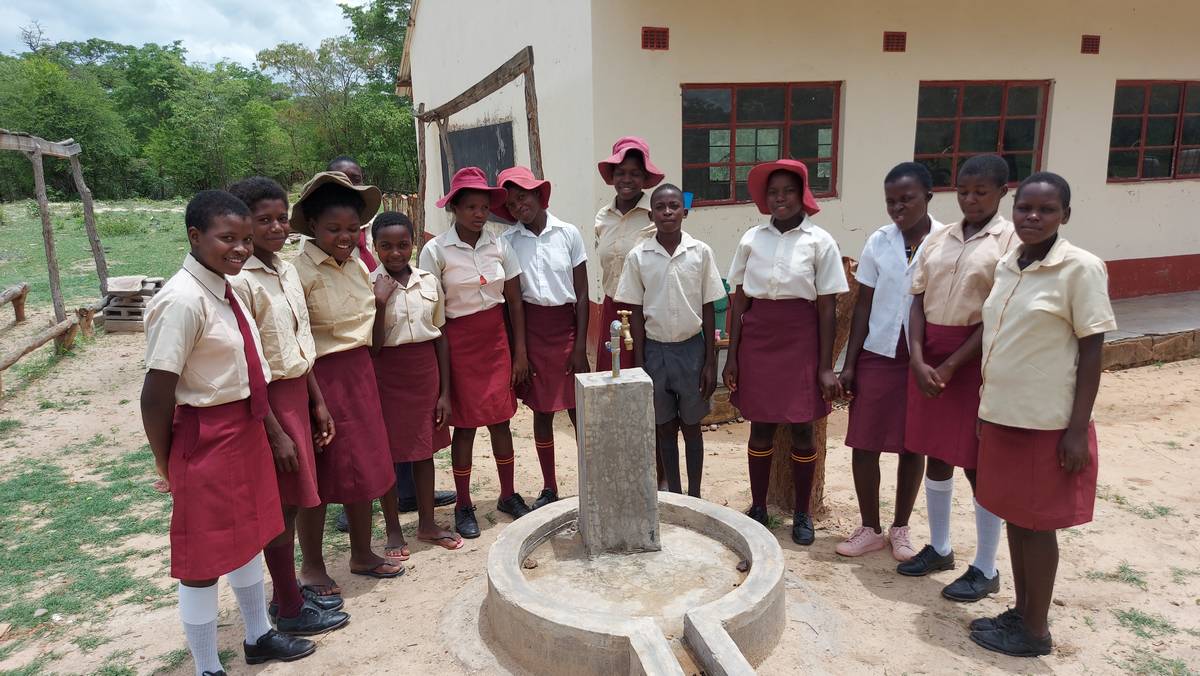Ngubo, Lupane district, Zimbabwe
In collaboration with

01/03/2021 – 28/02/2022
Provide drinking water to Ngubo Secondary School students and their families, their teachers and residents of the nearby community by drilling a well with solar-powered pumping and installing a distribution system.
Objectives
- Reduce diseases related to the consumption of unsafe water.
- Provide sustained access to drinking water to the Ngubo school and community for consumption, hygiene and irrigation of school vegetable gardens.
- Improve hygiene practices in the school and community and the learning environment.
- Reduce the burden of fetching water.
Beneficiaries
1,000 directs
200 children under 15 and 520 women.
3,006 indirects
1,232 children under 15 and 1,563 women.
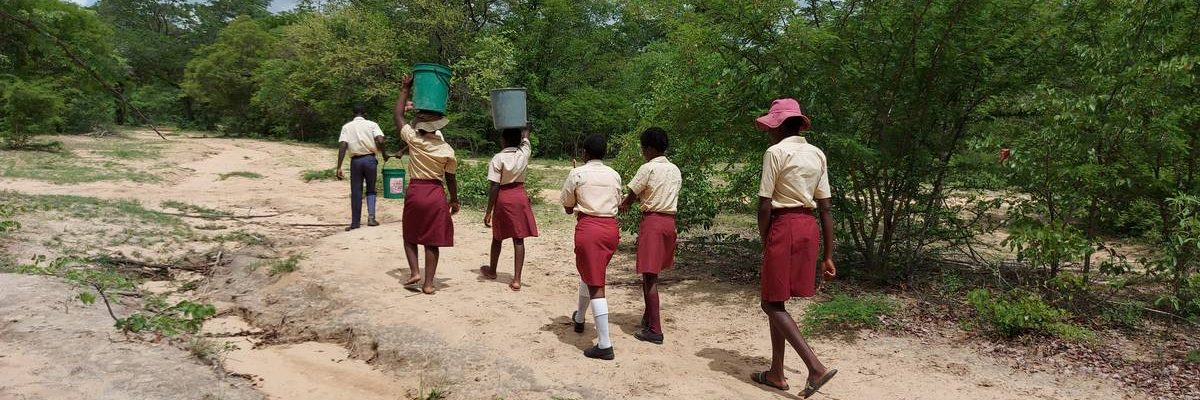
On the ground
Chronic food insecurity. Schools need an adequate supply of drinking water and safe sanitation.
The Lupane district has 109,545 inhabitants. Approximately 74% of the population lives in extreme poverty. Due to permanent drought in recent years, they are chronically food insecure: poor rainfall has led to crop failures, and households are highly dependent on weather conditions. Livelihoods in the district are mainly focused on crop and livestock production, and due to the lack of rainfall, most households do not manage to produce enough cereals for the entire year.
Several schools in the Lupane district do not have adequate access to drinking water and improved sanitation for their students. Most of them are rural schools and tend to serve the poorest and most disadvantaged communities, perpetuating the cycle of poverty and exclusion.
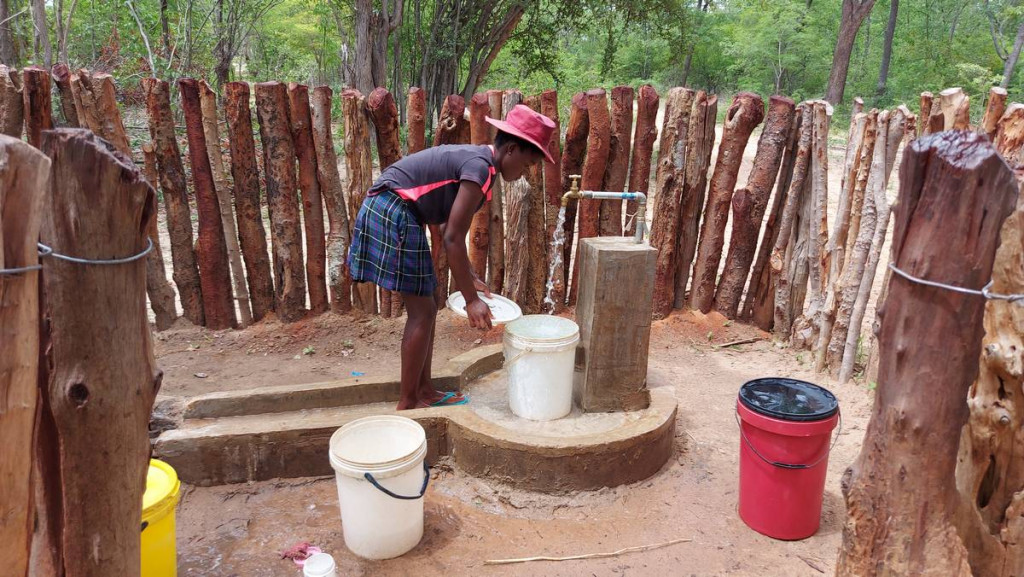
In detail
The project contemplates the drilling of a well with solar-powered pumping and installing a water distribution system for consumption and hygiene. A vegetable garden will also be created to provide students with a nutritional supplement and train them on agricultural practices as part of their school curriculum. This vegetable garden will provide the school with a source of income from surplus produce sales.
To this end, the location of the well will be identified within a maximum distance of 500 meters, and water capacity and quality tests will be carried out.
The well will have a concrete perimeter cover, a hand pump, a water distribution and storage system with a 10,000-liter elevated tank, five water distribution points in the school, two water distribution points in the vegetable garden, and an additional point that will distribute water to the community. The perimeter of each distribution point will be covered with concrete.
A Water Committee will be created at the school and will be made up of community members, students, and teachers, who will receive the necessary tools to maintain the system. Furthermore, two committee members will be trained as maintenance and repair craftsmen and equipped to perform preventive maintenance and repair.
To complement the project, a variety of fortified, fast-maturing seeds and horticultural equipment will be purchased with the community’s funds for use in the garden. A school water committee made up of community members, students, and teachers will also be created and provided with tools for maintenance and repair.
Prospects of sustainability
To ensure proper management and maintenance of the piped water system, a Management Committee will be created, consisting of the school development committee members, teachers, students, and community representatives.
The Management Committee will receive training and tools for the maintenance of the system. At least two members of the Management Committee will be trained as technicians. They will receive equipment to carry out preventive maintenance and repair to maintain access to safe drinking water. World Vision will continue to follow up after the project implementation period.


